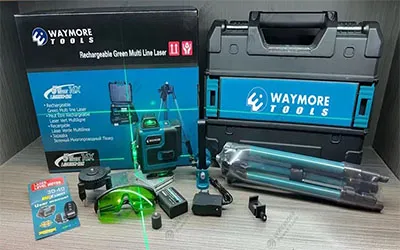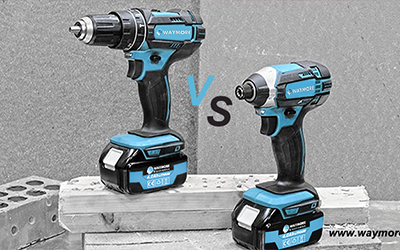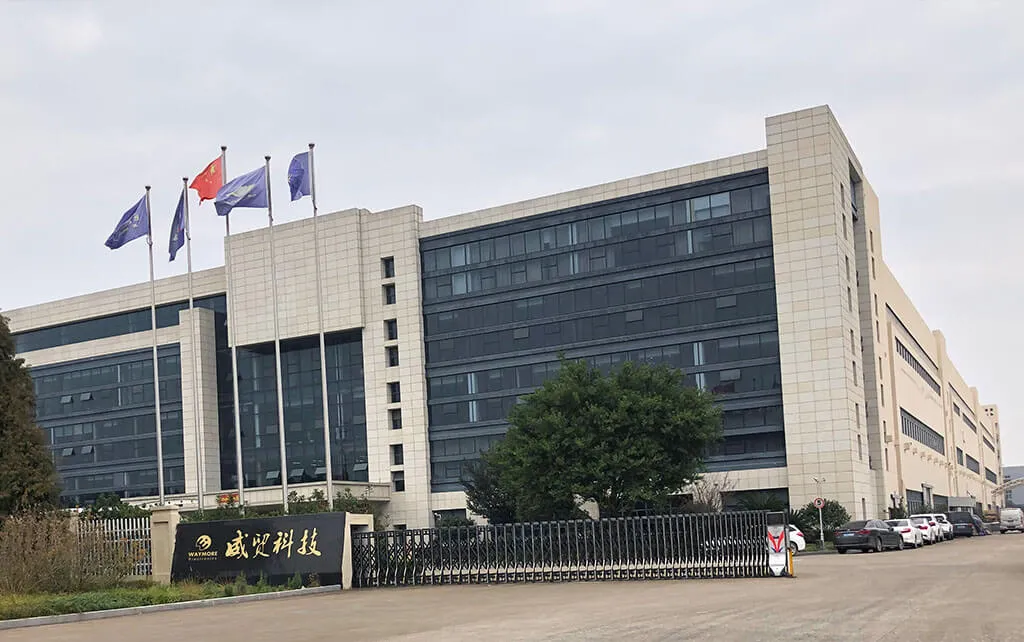
Table of Contents
- Introduction
- Troubleshooting Battery Drain: Identifying and Resolving Common Causes
- Optimizing Battery Performance: Tips and Tricks for Extending Battery Life
- Battery Health Management: Understanding Battery Degradation and Maximizing Lifespan
- Power-Saving Modes: Exploring Features to Conserve Battery
- Battery Replacement: When and How to Replace a Failing Battery
- Battery Calibration: Maintaining Battery Accuracy for Optimal Performance
- Battery Life Myths and Misconceptions: Debunking Common Beliefs
- Conclusion
Battery Blues: Constant Plugging, Never Enough Charging
Introduction
Battery life issues, particularly frequent recharging due to short battery life, have become a prevalent concern in today's technology-driven world. As portable devices such as smartphones, laptops, and tablets become an integral part of our daily lives, the need for extended battery life is paramount. However, many users encounter the frustration of having to recharge their devices multiple times throughout the day, hindering their productivity and convenience. This introduction will delve into the causes and potential solutions to address battery life issues, exploring strategies to optimize battery performance and extend the lifespan of our devices.Troubleshooting Battery Drain: Identifying and Resolving Common Causes
**Battery Life Issues: Frequent Recharging Due to Short Battery Life**Battery life is a crucial aspect of any electronic device, and when it becomes insufficient, it can be a major inconvenience. Frequent recharging due to short battery life can be caused by various factors, and identifying the underlying cause is essential for finding an effective solution.
One common culprit is excessive screen brightness. The display is a significant power consumer, and keeping it at maximum brightness can drain the battery rapidly. Adjusting the brightness to a comfortable level can significantly extend battery life.
Another factor to consider is background activity. Apps and services running in the background can continue to consume power even when the device is not in active use. Disabling unnecessary background processes and closing unused apps can help conserve battery.
Battery health also plays a role. Over time, batteries degrade and lose their capacity to hold a charge. If the battery is old or has been subjected to extreme temperatures, it may need to be replaced.
Certain apps can be particularly power-hungry. Games, streaming services, and social media apps often require significant processing power and can drain the battery quickly. Limiting the use of such apps or using them in moderation can help extend battery life.
Network connectivity can also impact battery life. Maintaining a stable connection to Wi-Fi or cellular networks requires constant power consumption. If the signal is weak or unstable, the device may work harder to maintain a connection, resulting in faster battery drain.
In addition to these common causes, there may be underlying hardware or software issues that contribute to short battery life. If the problem persists despite addressing the aforementioned factors, it is advisable to consult a qualified technician or contact the device manufacturer for further assistance.
By identifying and resolving the underlying causes of short battery life, you can significantly improve the battery performance of your electronic device and reduce the frequency of recharging. Remember to regularly monitor battery health, adjust settings, and limit power-intensive activities to ensure optimal battery life.
Optimizing Battery Performance: Tips and Tricks for Extending Battery Life
**Battery Life Issues: Frequent Recharging Due to Short Battery Life**Battery life is a crucial aspect of modern devices, as it determines how long we can use them without needing to recharge. However, many users face the frustration of frequent recharging due to short battery life. This issue can be particularly bothersome for those who rely heavily on their devices for work, communication, or entertainment.
Several factors can contribute to short battery life, including:
* **High screen brightness:** The display is one of the most power-hungry components of a device. Increasing the brightness level can significantly reduce battery life.
* **Excessive background activity:** Apps and services running in the background can drain the battery even when the device is not in use.
* **Outdated software:** Software updates often include optimizations that improve battery life. Failing to update the software can result in reduced battery performance.
* **Battery degradation:** Over time, batteries naturally degrade and lose their capacity to hold a charge. This is especially true for devices that are frequently charged or discharged.
To address these issues and extend battery life, consider the following tips:
* **Optimize screen settings:** Adjust the screen brightness to a comfortable level and enable automatic brightness adjustment.
* **Manage background activity:** Close unused apps and disable unnecessary notifications. Use battery-saving modes that restrict background activity.
* **Keep software up to date:** Regularly check for and install software updates to ensure optimal battery performance.
* **Avoid extreme temperatures:** Batteries perform best at moderate temperatures. Avoid exposing devices to extreme heat or cold.
* **Use power-saving features:** Many devices offer power-saving modes that reduce performance and conserve battery life.
* **Consider a battery replacement:** If the battery has significantly degraded, replacing it with a new one can restore optimal battery life.
Additionally, certain habits can also impact battery life. For instance, charging the device overnight can lead to overcharging, which can damage the battery. It is recommended to charge the device only when necessary and to avoid leaving it plugged in for extended periods.
By implementing these tips and tricks, users can significantly extend the battery life of their devices and reduce the frequency of recharging. This can enhance the overall user experience and ensure that devices remain reliable and convenient for daily use.
Battery Health Management: Understanding Battery Degradation and Maximizing Lifespan
**Battery Life Issues: Frequent Recharging Due to Short Battery Life**Battery life is a crucial aspect of modern electronic devices, as it determines how long they can operate without requiring a recharge. However, many users experience frequent recharging due to short battery life, which can be frustrating and inconvenient. Understanding the factors that contribute to battery degradation and implementing proper battery health management practices can help extend battery lifespan and minimize the need for frequent recharging.
One of the primary causes of battery degradation is the electrochemical reactions that occur during charging and discharging. These reactions gradually reduce the battery's capacity to store and release energy. Additionally, factors such as extreme temperatures, overcharging, and deep discharging can accelerate battery degradation.
To maximize battery lifespan, it is essential to adopt proper charging habits. Avoid overcharging the battery by unplugging the device once it reaches 100% charge. Similarly, avoid deep discharging the battery by recharging it before it completely depletes. Maintaining the battery within a moderate charge range (between 20% and 80%) can help prolong its lifespan.
Another important aspect of battery health management is temperature control. Extreme temperatures, both high and low, can damage the battery and reduce its capacity. Avoid exposing the device to direct sunlight or extreme cold for extended periods. If possible, store the device in a cool, dry environment when not in use.
Furthermore, it is advisable to use the device's original charger or a certified compatible charger. Using incompatible chargers can lead to overcharging or undercharging, which can damage the battery. Additionally, avoid using the device while it is charging, as this can generate heat and further degrade the battery.
In addition to these practices, some devices offer battery optimization features that can help extend battery life. These features may include adaptive brightness, which adjusts the screen brightness based on ambient light conditions, and power-saving modes, which reduce background activity and limit certain functions to conserve battery power.
By understanding the factors that contribute to battery degradation and implementing proper battery health management practices, users can significantly extend the lifespan of their device's battery. This can reduce the frequency of recharging, improve overall device performance, and enhance the user experience.
Power-Saving Modes: Exploring Features to Conserve Battery
**Battery Life Issues: Frequent Recharging Due to Short Battery Life**Battery life has become a significant concern in today's mobile-centric world. With the proliferation of smartphones, tablets, and other portable devices, users are constantly faced with the need to recharge their devices multiple times a day. This can be a major inconvenience, especially when on the go or in situations where access to a power outlet is limited.
One of the primary causes of short battery life is the increasing demand for power-hungry features and applications. High-resolution displays, powerful processors, and data-intensive apps all contribute to draining batteries at an alarming rate. Additionally, factors such as poor signal reception, excessive background activity, and outdated software can further exacerbate battery life issues.
To address these challenges, device manufacturers have introduced a range of power-saving modes designed to conserve battery life. These modes typically involve reducing the performance of certain features or limiting background activity. For example, "Low Power Mode" on iOS devices disables non-essential functions such as background app refresh and location services. Similarly, "Battery Saver" on Android devices reduces screen brightness, limits processor speed, and restricts app notifications.
While power-saving modes can effectively extend battery life, they often come with trade-offs. Reduced performance can impact the user experience, making it difficult to perform certain tasks or enjoy multimedia content. Additionally, some power-saving modes may disable essential features, such as GPS or Wi-Fi, which can be inconvenient in certain situations.
To optimize battery life without sacrificing functionality, it is important to adopt a holistic approach. In addition to using power-saving modes, users can implement a number of other strategies to conserve battery. These include:
* **Adjusting screen brightness:** Reducing screen brightness can significantly improve battery life.
* **Closing unused apps:** Background apps can drain battery even when not in use. Closing them can help conserve power.
* **Disabling unnecessary features:** Features such as Bluetooth, Wi-Fi, and GPS should be disabled when not needed.
* **Using dark mode:** Dark mode reduces screen power consumption, especially on OLED displays.
* **Updating software:** Software updates often include battery optimizations and bug fixes that can improve battery life.
By implementing these strategies and utilizing power-saving modes, users can significantly extend the battery life of their devices. This can reduce the need for frequent recharging and ensure that their devices remain operational throughout the day.
Battery Replacement: When and How to Replace a Failing Battery
**Battery Life Issues: Frequent Recharging Due to Short Battery Life**Battery life is a crucial aspect of any electronic device, and when it becomes insufficient, it can be a major inconvenience. Frequent recharging due to short battery life can disrupt daily routines and hinder productivity. Understanding the causes and potential solutions for this issue is essential for maintaining optimal device performance.
One common cause of short battery life is battery degradation. Over time, batteries lose their capacity to hold a charge due to chemical reactions and usage patterns. This degradation is inevitable, but it can be accelerated by factors such as extreme temperatures, overcharging, and deep discharging.
Another potential cause is software issues. Background apps, outdated software, and malware can consume excessive battery power without the user's knowledge. Regular software updates and app management can help mitigate this problem.
Hardware problems can also contribute to short battery life. Faulty charging ports, damaged cables, or internal component issues can prevent the battery from charging properly or draining it rapidly. In such cases, professional repair or replacement may be necessary.
To address battery life issues, several steps can be taken. First, optimize device settings by reducing screen brightness, disabling unnecessary features, and limiting background app activity. Additionally, using power-saving modes can extend battery life when needed.
If these measures do not resolve the issue, it may be time to consider battery replacement. Battery replacement is recommended when the battery's capacity has significantly diminished or when it exhibits signs of failure, such as rapid draining or overheating.
Replacing a battery is a relatively straightforward process that can be performed by a qualified technician or, in some cases, by the user themselves. However, it is important to use genuine replacement batteries and follow proper safety precautions to avoid damage to the device or injury.
By understanding the causes of short battery life and implementing appropriate solutions, users can extend the lifespan of their devices and minimize the inconvenience of frequent recharging. Regular maintenance, software updates, and timely battery replacement can ensure optimal device performance and uninterrupted usage.
Battery Calibration: Maintaining Battery Accuracy for Optimal Performance
**Battery Life Issues: Frequent Recharging Due to Short Battery Life**Battery life is a crucial aspect of any electronic device, and smartphones are no exception. However, many users experience frequent recharging due to short battery life, which can be frustrating and inconvenient. This issue can stem from various factors, including battery degradation, incorrect charging practices, and software glitches.
**Battery Degradation**
Over time, batteries naturally degrade, losing their capacity to hold a charge. This is an inevitable process that occurs with all batteries, but it can be accelerated by factors such as extreme temperatures, overcharging, and deep discharging. To mitigate battery degradation, it's important to avoid exposing your device to extreme heat or cold, charge it only when necessary, and avoid letting it completely discharge.
**Incorrect Charging Practices**
Improper charging habits can also contribute to short battery life. For example, using a non-original charger or charging cable can result in inconsistent charging and damage to the battery. Additionally, leaving your device plugged in for extended periods after it has reached 100% charge can overcharge the battery, reducing its lifespan.
**Software Glitches**
In some cases, battery life issues can be caused by software glitches. These glitches can prevent the device from accurately reporting its battery level or may cause the battery to drain more quickly than expected. Software updates often address these glitches, so it's important to keep your device's operating system up to date.
**Battery Calibration**
Battery calibration is a process that ensures the device's battery level indicator accurately reflects the actual battery capacity. Over time, the battery level indicator may become inaccurate, leading to the device shutting down prematurely or displaying an incorrect battery percentage. To calibrate the battery, follow these steps:
1. Discharge the battery completely by using the device until it turns off.
2. Charge the battery to 100% without interruption.
3. Repeat steps 1 and 2 two or three times.
**Additional Tips**
In addition to battery calibration, there are other tips you can follow to improve battery life:
* Adjust screen brightness to a comfortable level.
* Disable unnecessary background apps and services.
* Use power-saving modes when possible.
* Avoid using your device in extreme temperatures.
* Consider replacing the battery if it has significantly degraded.
By following these tips and regularly calibrating your battery, you can maintain optimal battery performance and reduce the frequency of recharging. Remember, battery life is a finite resource, and proper care and maintenance are essential for extending its lifespan.
Battery Life Myths and Misconceptions: Debunking Common Beliefs
**Battery Life Issues: Frequent Recharging Due to Short Battery Life**Battery life is a crucial aspect of modern devices, yet many users struggle with frequent recharging due to short battery life. This issue can be attributed to a combination of factors, including battery degradation, inefficient usage habits, and misconceptions about battery care.
Battery degradation is an inevitable process that occurs over time as batteries undergo repeated charging and discharging cycles. This gradual loss of capacity can lead to a noticeable decrease in battery life. However, certain factors can accelerate battery degradation, such as extreme temperatures, overcharging, and deep discharging.
Inefficient usage habits can also contribute to short battery life. Leaving devices on standby, running multiple apps simultaneously, and using high-power features such as GPS or Bluetooth can drain the battery rapidly. Additionally, screen brightness and volume settings play a significant role in battery consumption.
Furthermore, several misconceptions about battery care can lead to improper usage and reduced battery life. One common myth is that fully discharging a battery before recharging is beneficial. In reality, this practice can damage the battery and shorten its lifespan. Another misconception is that leaving a device plugged in overnight will overcharge the battery. Modern devices have built-in protection mechanisms to prevent overcharging.
To address battery life issues, it is essential to adopt proper charging and usage habits. Regular charging, avoiding extreme temperatures, and using power-saving features can help extend battery life. Additionally, it is important to calibrate the battery periodically to ensure accurate battery level readings.
If battery life issues persist despite implementing these measures, it may be necessary to consider replacing the battery. Battery replacement is a relatively straightforward process that can be performed by a qualified technician.
In conclusion, frequent recharging due to short battery life can be caused by a combination of battery degradation, inefficient usage habits, and misconceptions about battery care. By understanding the factors that affect battery life and adopting proper charging and usage practices, users can extend the lifespan of their batteries and minimize the need for frequent recharging.
Conclusion
**Conclusion:**Frequent recharging due to short battery life can be a significant inconvenience and hinder the usability of electronic devices. Addressing this issue requires a comprehensive approach that involves optimizing device settings, utilizing power-saving features, and considering hardware upgrades or replacements. By implementing these strategies, users can extend battery life and enhance the overall user experience.
 Waymore Tools
Waymore Tools



















































































































































































Leave a Comment